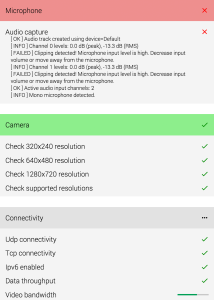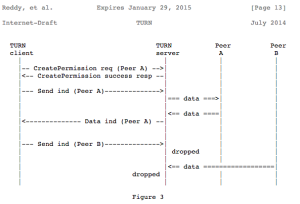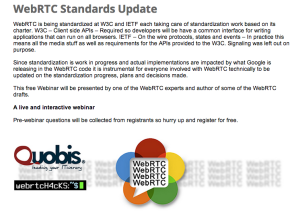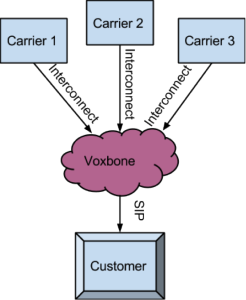WebRTC-based services are seeing new and larger deployments every week. One of the challenges I’m personally facing is troubleshooting as many different problems might occur (network, device, components…) and it’s not always easy to get useful diagnostic data from users. Earlier this week, Tsahi, Chad and I participated at the WebRTC Global Summit in London and had […]
coTURN: the open-source multi-tenant TURN/STUN server you were looking for
Last year we interviewed Oleg Moskalenko and presented the rfc5766-turn-server project, which is a free open source and extremely popular implementation of TURN and STURN server. A few months later we even discovered Amazon is using this project to power its Mayday service. Since then, a number of features beyond the original RFC 5766 have been […]
Project WONDER: showing WebRTC NNI does not need SIP
As discussed in previous posts, WebRTC standards do not specify a signaling protocol. In general this decision is positive by giving developers the freedom to select (or invent) the protocol that best suits the particular WebRTC application’s needs. This can also reduce the time to market since standards compliance-related tasks are minimized. WebRTC media and […]
WebRTC Standards Update Webinar
One of the first posts we published on this blog a year ago was a ‘A Hitchhiker’s Guide to WebRTC standardization‘. Since then, the work has certainly progressed and we have been sharing here a number of updates on the topic. This week we’re having qn IETF meeting in Canada and when it comes to […]
Trunking WebRTC: the user authentication challenge (Torrey Searle)
We probably talk about existing telephony stuff too much here, but the reality is there are billions of phone about there that want to be connected to the web like nearly everything else. This is especially important for any business that wants to link its website with its internal phone system. If you are a […]





